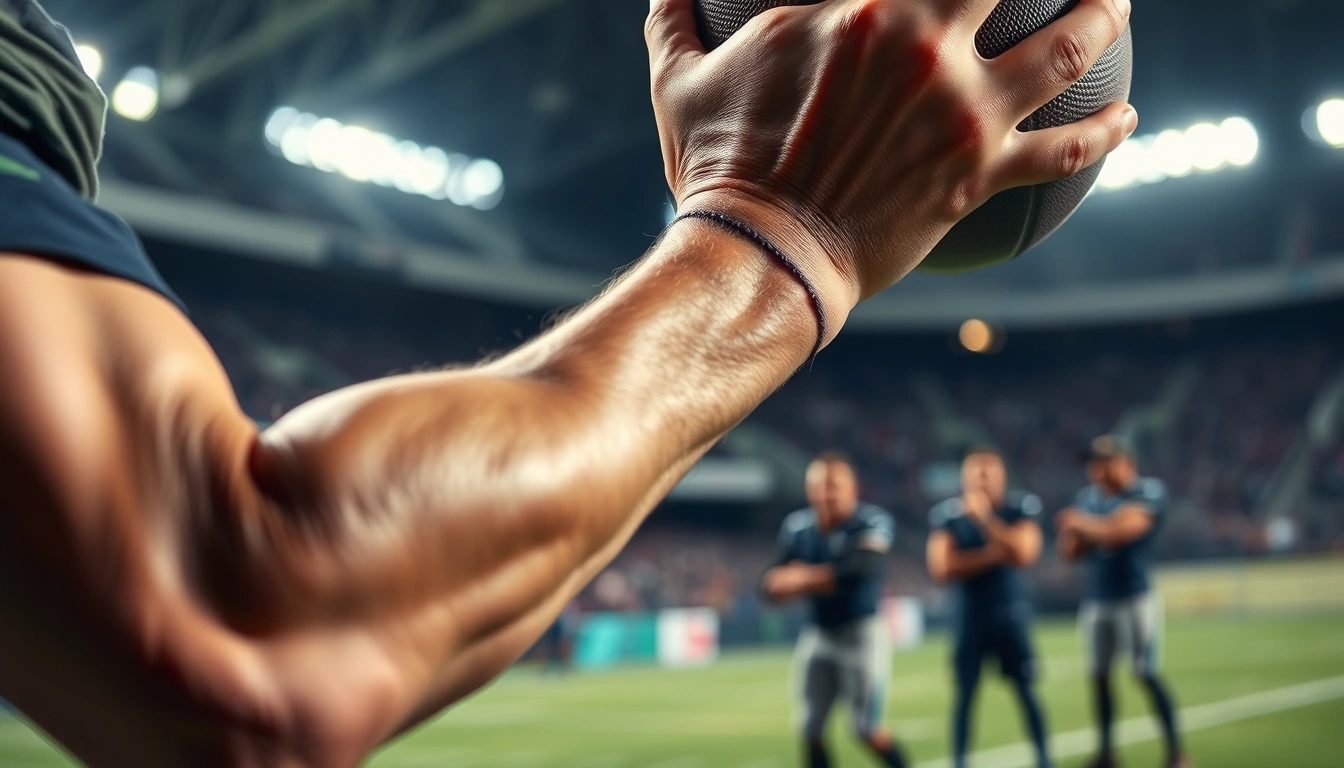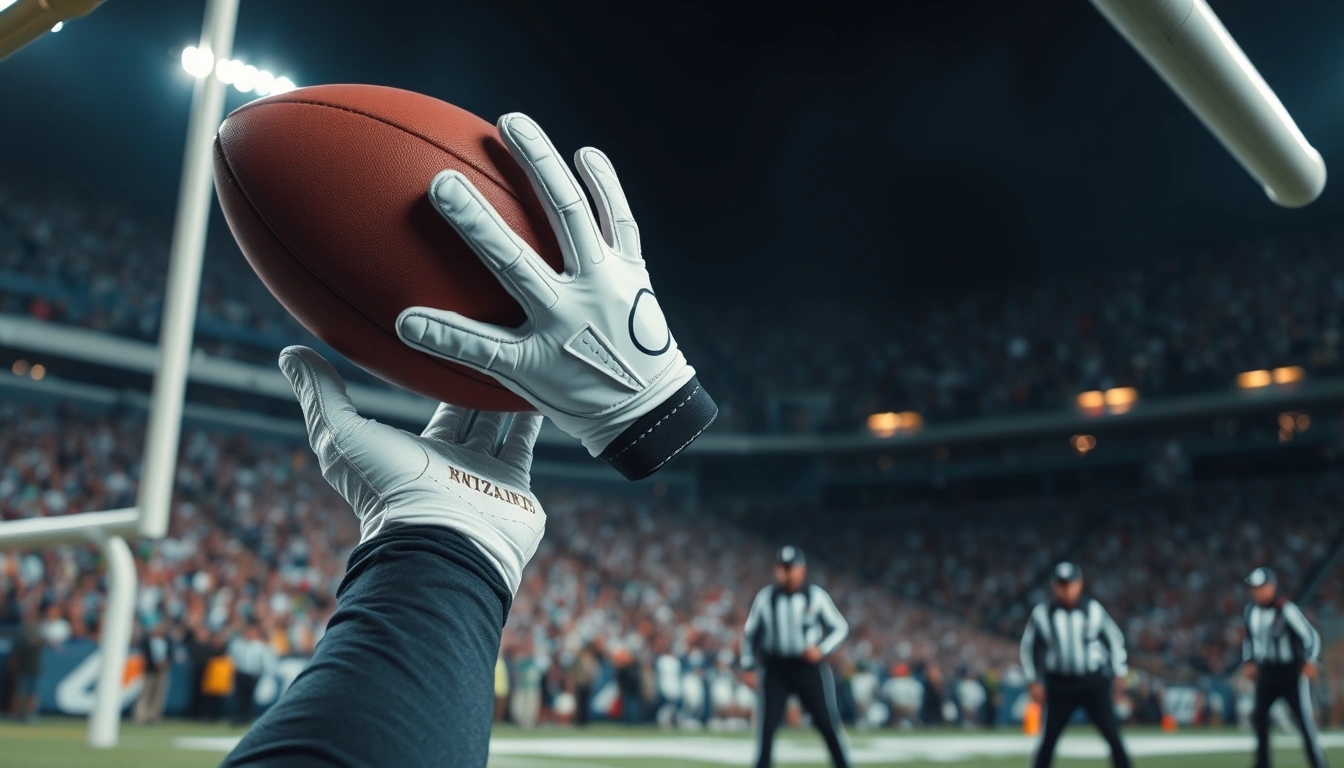Alright, so you’ve decided to dive into the wild world of football, and bam! You hit the infamous handball rule. If you’re scratching your head wondering why every other game turns into a debate club about whether a player’s arm was “too far” from their body or if it was “deliberate” or not—welcome to the club. The handball rule is probably the game’s most controversial and confusing foul, and honestly, it can drive even the most patient fan up the wall.
First up, what exactly is a handball? On the surface, it sounds simple: if a player touches the ball with their hand or arm, it’s a foul. But oh no, it’s never that straightforward. The key word here is deliberate. If a player accidentally gets the ball on their arm while running or falling, referees might just shrug and let play continue. But if they move their arm towards the ball or block a shot intentionally? That’s when the whistle blows. And here’s where things get messy—because “deliberate” is a judgment call, and humans, well, they make mistakes.
| Handball Rule Elements | Explanation |
|---|---|
| Deliberate Touch | Player intentionally uses hand/arm to control or block the ball. |
| Arm Position | Is the arm in an unnatural position? Extended away from body? |
| Ball’s Trajectory | Did the ball come at the player unexpectedly or from close range? |
Now, you might wonder, “Wait, is it the whole arm or just the hand?” This question has caused endless shouting matches in pubs and online forums. The rule treats the whole arm—from shoulder to fingertips—as “hand,” but here’s the kicker: if the arm is in a natural position, even if the ball touches it, it might not be a foul. But if the arm is stretched out, making the player bigger to block the ball—that’s a no-go.
- Natural Position: Arm close to the body, no penalty.
- Unnatural Position: Arm extended or raised, likely a foul.
Now, let’s talk about accidental contact. Sometimes, the ball just bounces off a player’s arm. In those “oops” moments, refs usually let it slide. But if the ball hits the arm and the player gains an advantage, like scoring or creating a goal chance, you can bet your last dollar there’ll be a penalty.
Enter VAR—the Video Assistant Referee. This technology was supposed to clear up the chaos, but honestly, it sometimes adds fuel to the fire. VAR can slow down the game for ages while officials review a split-second arm movement. Remember the 2018 World Cup’s “Hand of God 2.0” moments? Yep, VAR was involved, and fans were divided all over again.
Famous Handball Moments
Who could forget Diego Maradona’s legendary “Hand of God” goal in 1986? Or more recently, the 2019 Champions League handball that caused uproar? These incidents show just how much weight this rule carries.
Tips for New Fans to Spot Handball Like a Pro:- Watch the arm’s position: Is it natural or stretched?- Consider the ball’s speed and direction.- Look for player reaction: Did they move their arm towards the ball?- Remember, not every touch equals a foul.
To wrap it up, the handball rule in football is a tricky beast, full of gray areas and heated debates. But with a bit of patience and some practice spotting the nuances, you’ll be calling out handballs like a seasoned fan—just maybe don’t get too worked up when the ref makes a call you don’t agree with. After all, that’s part of the beautiful chaos of football.
What Exactly Is a Handball in Football?
Alright, let’s get straight to the heart of the matter: what the heck is a handball in football anyway? At first glance, it sounds simple—if a player touches the ball with their hand or arm, that’s a handball, right? Well, not quite. The whole thing is like a riddle wrapped in a mystery inside an enigma, and it’s been driving fans, players, and referees bonkers for decades.
So, the basic idea is that a handball occurs when a player deliberately uses their hand or arm to control or touch the ball. But—and here’s the kicker—not every contact with the hand or arm is automatically a foul. The devil’s really in the details, as they say. For example, did the player mean to touch the ball or was it a total accident? Was the arm in an unnatural position? Did the contact help the player gain an advantage? These questions make the rule feel less like black-and-white and more like fifty shades of gray.
- Deliberate Touch: If the player intentionally moves their hand or arm towards the ball, that’s usually a handball foul.
- Accidental Contact: Sometimes the ball just bounces off a player’s arm without any intention. In those cases, referees often let it slide.
- Arm Position: If the arm is stretched out away from the body, making the player’s silhouette bigger, it’s more likely to be called a handball.
Now, you might be thinking, “Okay, so what counts as the arm? Is it just the hand or the entire limb?” This question alone has caused endless debates. According to the laws of the game, the arm includes everything from the fingertips to the shoulder. So, if the ball hits anywhere on that area, it’s considered a handball if the other conditions are met.
| Handball Criteria | Explanation |
|---|---|
| Intentionality | Did the player deliberately touch the ball with hand/arm? |
| Arm Position | Is the arm in an unnatural or extended position? |
| Ball Contact | Was the ball played with the hand/arm or just brushed off? |
| Advantage Gained | Did the player benefit from the handball? |
To put it simply: if a player’s hand or arm intentionally touches the ball, it’s a foul. But if it’s accidental, like the ball just smacks their arm while close to their body, the referee might shrug and say, “Carry on.”
Here’s a little nugget for new fans: the rule is constantly evolving. What was considered a handball five years ago might not be one today. Thanks to VAR (Video Assistant Referee), referees get to review these tricky moments, but even then, controversy is never far behind. So, next time you see a handball call, remember—it’s not as cut and dry as it looks. It’s a mix of intention, positioning, and sometimes just plain luck.
Quick Tips for Spotting Handball Like a Pro:
- Watch the player’s arm position: is it natural or stretched out?
- Look for intentional movement towards the ball.
- Consider the context: did the player gain an advantage?
- Remember, accidental contact usually isn’t penalized.
So, while the handball rule might seem like the football world’s eternal headache, understanding these basics should make it a bit less confusing. Just keep your eyes peeled and expect the unexpected—because in football, nothing’s ever that simple!
Intent Matters: When Is Handball Really a Foul?
Alright, let’s get one thing straight right off the bat: not every time the ball hits a player’s hand or arm is it a foul. Sounds simple, right? Well, if only football was that straightforward! The handball rule is one of those maddening gray areas that even seasoned referees squint at, scratch their heads, and sometimes just throw their hands up in despair.
First up, intent is the big, bad wolf in this story. Did the player purposely reach out to stop the ball? Or was it just an unlucky bounce off their arm as they tried to defend or run? The rulebook tries to be clear, but the reality on the pitch? Less so. Referees have to guess what’s going on in a player’s mind — and spoiler alert: they don’t have a crystal ball.
| Factor | Description |
|---|---|
| Intentional Contact | Did the player deliberately move their hand/arm towards the ball? |
| Arm Position | Is the arm in a natural position or unnaturally extended? |
| Distance from Opponent | How close was the player to the ball’s trajectory? |
| Player Movement | Was the player actively trying to block or just reacting? |
Now, about that arm position—it’s a real headache. If a player’s arm is tacked to their body, referees usually give them the benefit of the doubt. But if it’s sticking out like they’re trying to catch a fly? That’s a red flag. The “unnatural position” phrase gets thrown around a lot, and honestly, it’s a bit subjective. One ref might think “Hey, that arm was just chilling,” while another screams “Penalty!”
And it’s not just about where the arm is, but also about timing. Was the ball coming at lightning speed, giving the player zero time to react? Or did they have a good moment to pull their arm away but didn’t? That’s a crucial distinction. You can’t really blame someone for a split-second accident, but if they’re basically playing “catch” with the ball, expect a whistle.
- Deliberate handball: Clear foul, usually a free kick or penalty.
- Accidental contact with arm tucked in: Usually no foul.
- Arm extended unnaturally: Often called, especially if it stops a goal-scoring chance.
Here’s the kicker: referees have to make these calls in real-time, often with thousands of fans screaming, players pleading, and cameras zooming in on every millimeter of movement. It’s no wonder controversies explode every season. And just when you think technology like VAR will save the day, it sometimes just adds fuel to the fire with even more debates about “clear and obvious errors.”
So, next time you see a handball call, remember: it’s not just about the ball touching the hand. It’s a messy mix of intent, position, timing, and context. And sometimes, the ref’s gut feeling. In the chaotic dance of football, that’s what makes the game thrilling — and maddening — all at once.

The Arm’s Length Debate: What Counts as ‘Arm’?
Alright, let’s get into the nitty-gritty of one of football’s most head-scratching controversies: what exactly counts as the “arm” when it comes to handball? You’d think this would be a no-brainer, right? Hand hand, arm arm. But nah, it’s way messier than that. The rulebook doesn’t just say “hand,” it includes the whole arm, but how far up does that go? Is it just the forearm? Does the shoulder count? And why do referees sometimes seem to have their own secret definitions? This confusion is the root of countless debates, heated arguments among fans, and those infamous “VAR check” moments that drag on forever.
Let’s break it down a bit. Imagine a player’s arm is divided into three parts:
- Hand and fingers
- Forearm and elbow
- Upper arm and shoulder
Now, the laws of the game say the whole arm is off-limits — but here’s the kicker: the interpretation depends heavily on the arm’s position relative to the body. If a player’s arm is tucked in naturally, it’s usually considered okay if the ball hits it. But if the arm is stretched out or making the player’s body unnaturally bigger, referees are more likely to call it a handball foul.
| Arm Part | Common Interpretation | Typical Referee Call |
|---|---|---|
| Hand and Fingers | Always considered handball if ball touches deliberately or unintentionally in an unnatural position | Usually penalized |
| Forearm and Elbow | Depends on arm position; natural position often allowed, extended arm more likely penalized | Mixed calls, controversial |
| Upper Arm and Shoulder | Generally considered part of the body, less likely to be penalized unless arm is clearly making body bigger | Rarely penalized |
This is why you’ll see fans and pundits losing their minds over a “handball” that looks obvious to one person and totally fine to another. The “arm’s length” debate is less about actual measurements and more about the referee’s gut feeling on whether the arm was in a natural position. And trust me, that gut feeling changes from ref to ref, match to match.
Here’s a quick list of practical pointers to understand this better:
- Is the arm close to the body? If yes, usually no foul.
- Is the arm making the player’s silhouette bigger? If yes, more chance of a foul.
- Did the ball hit the hand or fingers first? Almost always a foul.
- Was the ball coming from a short distance or at high speed? The faster and closer, the more likely it’s accidental and not called.
So yeah, it’s complicated, and the rule isn’t exactly crystal clear. The arm’s length debate is a perfect example of why football’s handball rule is such a headache for everyone involved — players, refs, and fans alike. It’s a mix of anatomy, physics, and a pinch of referee intuition. Next time you scream at the TV about a “handball,” just remember: even the pros don’t have it all figured out.
In short: The arm isn’t just a straightforward limb in football. It’s a gray zone, a hotbed of controversy, and the reason why handball debates never seem to die down. Whether it’s the hand, forearm, or upper arm, the context and position are king — and that’s why this debate will probably keep kicking around for years to come.
Handball vs. Accidental Contact: Where’s the Line?
Alright, let’s get real about one of football’s most debated moments: when the ball just accidentally hits a player’s arm. You know the drill—ball flies in, it ricochets off a defender’s arm, and suddenly the crowd and commentators are losing their minds, screaming “Handball!” But hold your horses, because not every arm touch is a foul, and that’s where the whole drama unfolds.
First off, referees have a tough gig here. They have to decide in a split second if the contact was deliberate or just pure bad luck. The rulebook’s pretty clear that intent matters, but let’s be honest, it’s not always black and white. Sometimes, the ball hits a player’s arm when it’s tucked close to the body, and other times the arm’s flailing about like it’s got a mind of its own. The difference? Well, that’s the million-dollar question.
- Arm position: If a player’s arm is in an “unnatural” position—think stretched out wide or away from their body—referees are more likely to blow the whistle.
- Distance and reaction time: Was the player close enough to react? If the ball is struck from a few feet away at lightning speed, it’s tough to expect perfect arm control.
- Intentional movement: Did the player move their arm towards the ball? That’s a big no-no.
Now, here’s a little table to break down when accidental contact usually gets a pass and when it doesn’t:
| Scenario | Referee Likely Decision | Reasoning |
|---|---|---|
| Ball hits arm close to body | No foul | Arm in natural position, no intent |
| Arm sticks out, ball hits it | Foul | Arm considered to have made body bigger |
| Ball rebounds off arm after deflection | Usually no foul | Contact is accidental and unavoidable |
| Player moves arm towards ball | Foul | Clear deliberate action |
What really grinds the gears of fans and players alike is the subjectivity of these calls. One ref might let it slide, another might point straight to the spot. And then there’s VAR, which sometimes adds fuel to the fire by replaying the tiniest arm flicks in slow-mo, making accidental contact look like a calculated handball. Talk about a recipe for chaos!
So, what’s the takeaway here? If you’re watching a match and the ball bounces off an arm, ask yourself:
- Was the arm in a natural position?
- Did the player have time to react?
- Did the player make a move towards the ball?
If the answers lean towards “no,” chances are the referee’s right to let it go. But if the arm’s sticking out like it’s begging for attention, expect a whistle.
At the end of the day, handball calls, especially accidental ones, are a bit like weather forecasts—pretty accurate most of the time but occasionally leaving everyone drenched in confusion. And honestly, maybe that’s part of the charm and frustration of football all wrapped into one.
VAR and Handball: Has Technology Made It Clearer?
Alright, let’s get real about VAR—Video Assistant Referee. Since its big debut, VAR has been the talk of the town, especially when it comes to handball decisions in football. You’d think having a video replay system would clear up all the mess, right? Well, not exactly. VAR has definitely changed the game, but whether it’s made things clearer or just stirred the pot more is still up for debate.
First off, handball in football is already a headache for referees. The rule itself is a minefield of “intent,” “arm position,” and “accidental contact.” Now throw VAR into the mix, and suddenly every little twitch of a player’s arm is scrutinized in slow-mo. Sometimes, it feels like the refs are looking for reasons to pull out a yellow card rather than letting the game flow. And fans? They’re either cheering the tech or booing it like it’s the villain in a soap opera.
| Pros of VAR on Handball Decisions | Cons of VAR on Handball Decisions |
|---|---|
| Helps catch clear mistakes missed in real time | Slows down the game, killing momentum |
| Provides multiple angles for better judgment | Still subjective; different refs interpret the same footage differently |
| Can correct game-changing errors (penalties, goals) | Fans and players get frustrated with long delays |
Remember the infamous 2019 Champions League quarter-final between Manchester City and Tottenham? VAR spotted a handball that the on-field ref didn’t see, awarding a penalty that later helped City advance. Some hailed it as justice served; others screamed “ruined the drama!” This moment perfectly captures the double-edged sword of VAR.
- VAR’s biggest challenge: interpreting “intent.” Is the player deliberately blocking the ball, or just unlucky? The camera sees everything, but it can’t read minds.
- Another headache: the “arm’s length” rule. What counts as a handball? An arm stretched out wide? Or just the hand touching the ball? VAR reviews often spark heated debates because of this ambiguity.
And let’s not forget the human element. Referees still have to make the final call after watching the footage, and guess what? They sometimes get it wrong or look indecisive. VAR is a tool, not a magic wand.
Famous VAR Handball Moments:- 2018 World Cup: France’s controversial penalty vs. Australia- 2020 Premier League: Son Heung-min’s goal disallowed for handball- 2022 World Cup: Morocco’s penalty decision overturned after VAR review
So, has VAR made handball calls crystal clear? Not quite. It’s improved accuracy in some cases, but it’s also introduced new frustrations and debates. The technology is only as good as the rules and people interpreting it. For now, VAR remains a love-hate relationship among fans, players, and refs alike. One thing’s for sure: football’s handball drama is far from over.
Practical Tips for Fans:
- Don’t expect every VAR decision to be perfect—there’s always some gray area.
- Watch how refs explain their VAR calls post-match; it helps understand their thinking.
- Keep an eye on arm position and player movement—not just the ball—when judging handballs yourself.
In the end, VAR is here to stay, whether you like it or not. It’s just another twist in football’s ever-evolving story.

Famous Handball Controversies in Football History
Football fans know that handball incidents have a knack for stirring up drama, debate, and sometimes downright outrage. From the cheekiest cheats to the most baffling referee calls, handball controversies have shaped the sport’s history in ways no other foul quite matches. Let’s take a stroll down memory lane and revisit some of the most jaw-dropping moments that had everyone shouting at their screens.
One can’t talk about handball without mentioning Diego Maradona’s infamous ‘Hand of God’ goal in the 1986 World Cup quarterfinal against England. The Argentine legend slyly used his hand to punch the ball into the net, and despite protests, the goal stood. Maradona’s cheeky grin afterward? Iconic. This moment didn’t just change that match; it became a symbol of how handball calls could split opinion and ignite fierce national rivalries.
| Incident | Year | Details | Outcome |
|---|---|---|---|
| Maradona’s Hand of God | 1986 | Handball goal vs England in World Cup quarterfinal | Goal allowed; Argentina won 2-1 |
| Thierry Henry’s Handball | 2009 | Handball assist vs Ireland in World Cup qualifier | Goal allowed; Ireland missed World Cup |
| Luis Suárez’s Handball Save | 2010 | Deliberate handball on goal line vs Ghana in World Cup quarterfinal | Red card & penalty awarded; Ghana missed penalty; Uruguay won in shootout |
Fast forward to 2009, and you have Thierry Henry’s handball that caused a tsunami of controversy. During the World Cup qualifiers, Henry blatantly handled the ball before setting up the winning goal against Ireland. The Frenchman’s sly move denied Ireland a spot in the World Cup, leading to calls for video replay systems and a lot of angry Irish fans. You could say this incident was one of the catalysts for the eventual adoption of VAR.
Then there’s the 2010 World Cup quarterfinal where Luis Suárez pulled off a handball save on the goal line against Ghana. Sure, it was a blatant foul, but it was also a desperate, last-ditch effort to keep his team alive. Suárez got sent off, Ghana missed the penalty, and Uruguay went on to win in a shootout. Talk about drama! Some hailed Suárez as a hero; others called him a cheat. This incident perfectly highlights how handball controversies often blur the line between sportsmanship and gamesmanship.
- Why do handball incidents cause so much fuss? Because they often decide matches and tournaments, sometimes unfairly.
- Referee errors and split-second decisions add fuel to the fire, especially before VAR came along.
- Players’ clever or sneaky tactics to avoid penalties keep fans and officials on their toes.
In recent years, the introduction of VAR has added a new twist to handball controversies. Sure, it’s supposed to clear things up, but sometimes it just drags the drama out longer or sparks fresh debates about “clear and obvious errors.” Remember the 2018 World Cup when a few handball calls overturned goals or penalties? Fans were divided, with some praising technology and others crying foul on the technology itself.
In summary, handball controversies are woven into football’s fabric. They’re part of what makes the game so unpredictable and, frankly, entertaining. Whether it’s a crafty cheat or a referee’s mistake, these moments keep us talking long after the final whistle.
Key Takeaways:- Handball incidents often change the course of big matches.- Intent and context are tricky to judge, leading to heated debates.- Technology helps but doesn’t end the controversy.- Fans and players alike love to dissect every handball moment.
So next time you see a handball call, remember: you’re witnessing a piece of football history in the making, complete with all its messy, thrilling imperfections.
How Players Try to Avoid Handball Penalties
Alright, let’s dive into one of football’s sneakiest arts: dodging handball calls. You might think players just stand there hoping not to get caught, but nah, it’s way more cunning than that. Footballers have become masters of subtlety, using clever tricks and body language to convince referees that no foul occurred—even when their arms have definitely been in the way. It’s almost like a game within the game, where the handball rule is the battleground.
First off, players often pretend ignorance. This means they’ll quickly pull their arm away or drop it as if the ball barely brushed them. Sometimes, it’s all about the timing. If the ball hits a player’s arm but it’s super fast, they’ll act like it was accidental, hoping the ref buys the “I didn’t mean it” story. The body language here is key—shrugging shoulders, hands up like “what me?”, or even a quick grimace to show “oops, didn’t mean to.” It’s a psychological play, trying to make the referee think, “Eh, no harm done.”
| Common Player Tricks | Purpose |
|---|---|
| Quick arm withdrawal | To appear unintentional |
| Feigning surprise | To show no deliberate act |
| Body positioning | To minimize arm exposure |
| Blaming others (like the ball’s speed) | To shift responsibility away |
Another sneaky move involves body positioning. Players often hold their arms close to their body, especially when defending or trying to shield the ball. But when the ball comes flying, they might quickly angle their arm just right so it looks like the ball hit their chest or shoulder instead of the arm. This borderline magic act is all about the camera angle and the referee’s line of sight. If the ref can’t see the arm clearly, no call. Sometimes, it’s downright cheeky—players will even exaggerate their movements to make it look like the ball hit somewhere else. Sneaky, huh?
- Arm tucked in: Keeps the arm out of the way
- Subtle arm movement: To avoid making the arm ‘unnatural’ or ‘extended’
- Feigning contact elsewhere: Acting like the ball hit the chest or leg
Now, here’s where it gets interesting: some players have been caught gaming the system by using their arms as a shield but making it look natural. Think of it as a bit of “legal cheating.” The rules say the arm can’t be in an unnatural position, but what counts as ‘unnatural’ is super subjective. Players exploit this gray area like pros. They’ll stretch their arm just enough to block the ball but not so much that it screams “handball.” It’s a borderline dance, and referees often end up scratching their heads.
Example Scenario:- Ball approaches defender fast- Defender tucks arm close, but ball grazes fingertips- Defender reacts with surprise, pulls arm away quickly- Referee unsure if arm was ‘extended’ or natural- No handball called, game continues
And let’s not forget the psychological warfare off the pitch. Players will sometimes argue, protest, or even theatrically appeal to the referee to create doubt or distract them. The more noise, the more chance the ref second-guesses their initial thought. It’s all part of the game, and honestly, it adds a bit of spice to those tense moments.
In short, avoiding handball penalties isn’t just about luck. It’s a mix of quick reflexes, smart body language, and a pinch of acting. Next time you watch a match, keep an eye on those subtle arm movements—you might just spot a player pulling off a handball dodge like a pro magician.
Handball Rule Variations Across Different Leagues
Believe it or not, the handball rule in football isn’t this one-size-fits-all kind of deal. Nope, it’s more like a patchwork quilt stitched together by different leagues, each adding their own flair and quirks. If you thought a handball was just a hand touching the ball, buckle up, because the Premier League, La Liga, Serie A, and others have their own takes — some subtle, some downright head-scratchers.
First off, the Premier League is famous for its strictness. They tend to emphasize intent heavily, but also have a reputation for calling handballs when the arm is “unnaturally” positioned, even if the player didn’t mean to block the ball. This “unnatural position” phrase is a bit of a grey cloud hanging over every defender’s shoulder. Basically, if your arm is sticking out like a sore thumb, expect a whistle. The Premier League’s approach often sparks debates because it’s not always clear what counts as “unnatural.”
| League | Key Handball Interpretation | Notable Quirk |
|---|---|---|
| Premier League | Focus on intent + arm position | Strict on “unnatural arm” positioning |
| La Liga | More lenient on accidental contact | Allows some handball if ball hits arm naturally |
| Serie A | Strict, but with emphasis on “gaining advantage” | Handball is often called if it leads to a goal or chance |
| Bundesliga | Balanced, with referee discretion | Focus on whether handball changes play outcome |
Meanwhile, over in La Liga, the vibe is a bit more forgiving. They tend to give players the benefit of the doubt if the ball hits the arm accidentally — like, if it’s just a reflex or the arm is in a natural position, you might get away with it. This leniency sometimes frustrates fans who want stricter calls but also makes for fewer stoppages. So, if you’re watching Real Madrid or Barcelona, expect fewer handball whistles for those borderline “oops” moments.
Now, Serie A in Italy is a whole different ball game — pun intended. The referees here are notorious for cracking down hard if the handball leads to a clear advantage, especially goals or big chances. It’s less about intent and more about the outcome. If your handball helped your team score or create a dangerous moment, expect a call. This has led to some pretty dramatic moments where players look stunned because they didn’t “mean” to touch the ball, but the ref’s decision stands.
- Bundesliga tends to sit somewhere in the middle, relying heavily on referee discretion.
- They focus on whether the handball actually changed the play’s outcome.
- This can make calls feel inconsistent but arguably fairer in context.
So, why all these differences? Well, football’s global nature means different cultures, referee training, and even fan expectations shape how rules get applied. The introduction of VAR has tried to iron out some of these wrinkles, but honestly, it’s added fuel to the fire in many cases — more replays, more debates, and sometimes even more confusion.
Quick Practical Insight for Fans: If you’re watching a match from a league you’re not used to, don’t assume handball calls will be the same as your local league or the World Cup. Pay attention to how refs treat arm positions and whether they seem to care more about intent or outcome. It’s a bit like learning a new dialect of football — same language, different accent.
In conclusion, the handball rule is a slippery fish that shifts shape depending on where you are. Whether it’s the Premier League’s strictness, La Liga’s leniency, or Serie A’s outcome-based calls, understanding these nuances can make you a sharper, less frustrated fan. And hey, next time you scream at the ref for a handball call, you’ll know it’s not just you — it’s the league’s rulebook playing tricks.

Practical Tips for New Fans: Spotting Handball Like a Pro
Alright, so you’re new to football and that dreaded handball rule has you scratching your head, huh? Don’t worry, you’re not alone. Spotting a handball in real-time can feel like trying to catch a greased pig — slippery, frustrating, and often leaving you yelling at your screen like the ref’s lost his glasses. But hey, it’s not rocket science. Let’s break it down so you can join the ranks of those who actually get what’s going on.
First off, watch the player’s arm position. A natural arm position — close to the body — usually means no foul. If the arm is sticking out like it’s trying to catch a bus, that’s when refs start raising eyebrows. But beware, some players are sneaky and make their arms look natural while still blocking the ball. So, context is king.
- Tip #1: Focus on the intent. Was the player deliberately moving their hand or arm towards the ball? If yes, handball. If no, maybe just bad luck.
- Tip #2: Consider the distance the ball traveled. A ball bouncing off an arm from a meter away? Less likely a foul than a ball that’s deflected off a hand right in front of the player.
- Tip #3: Watch the speed of the ball. If it’s a lightning-fast shot and the arm just happens to be there, refs might let it slide.
| Situation | Handball? (Usually) | Why? |
|---|---|---|
| Arm tucked in, ball hits shoulder | No | Shoulders aren’t arms, so no foul |
| Arm extended away from body, ball hits hand | Yes | Unnatural position, blocks ball |
| Ball rebounds off arm accidentally during a scramble | Depends | Referee discretion on intent and position |
Now, here’s a little secret: even the pros get it wrong sometimes. The rule is subjective, and refs have to make split-second calls. So, if you catch yourself screaming at the TV, just remember — it’s part of the fun (and frustration) of football.
Another nugget: VAR is your friend and your enemy. It can clear up some calls but also drag things out to the point where you forget what you were cheering about in the first place. So, while technology helps, it’s not foolproof.
Quick checklist to spot handball:- Arm position: tucked in or flailing?- Intent: deliberate movement or accidental?- Ball trajectory: close range or long bounce?- Game context: is the player trying to block a shot or just unlucky?
In the end, don’t sweat it too much. The handball rule is tricky, even for die-hard fans. The best way to get better is just watching more games, paying attention to the refs’ calls, and maybe having a buddy explain the controversial moments. Soon enough, you’ll be the one telling others when that was a clear handball or just a lucky deflection.
So, grab your snacks, settle in, and enjoy the beautiful chaos of football — handballs and all.
Frequently Asked Questions
- What exactly counts as a handball in football?
Great question! A handball happens when a player deliberately touches the ball with their hand or arm. But here’s the kicker—not every touch is a foul. The key is whether the player intentionally uses their hand or arm to control or interfere with the ball.
- Does intent really matter when deciding a handball?
Absolutely! Referees look closely at whether the player meant to handle the ball. Accidental contact, like the ball bouncing off a player’s arm naturally, often isn’t penalized. It’s like catching a fly ball—you don’t always mean to grab it, right?
- How do referees decide what part of the arm counts as a handball?
It’s a bit of a gray area. Generally, the whole arm—from shoulder to fingertips—is considered. But the position of the arm matters too: if it’s in an unnatural position making the player’s body bigger, that’s usually a foul. Think of it like using your arm as a shield—referees don’t like that.
- What’s the difference between accidental contact and a foul handball?
Imagine the ball just bounces off your arm without you doing anything—that’s accidental. But if you move your arm towards the ball or make yourself bigger, that’s when the whistle blows. It’s all about whether the action was avoidable or intentional.
- Has VAR made handball decisions clearer?
VAR has definitely stirred the pot! While it helps review tricky calls with slow-motion replays, it sometimes sparks more debate because even tiny movements get scrutinized. It’s like zooming into a photo and arguing over every pixel.
- Why do handball rules vary across different football leagues?
Believe it or not, not all leagues see handball the same way. Some are stricter, while others give players more leeway. It’s like dialects in language—same sport, different interpretations. This keeps fans and players on their toes worldwide.
- How can new fans spot handballs like a pro?
Keep your eyes on the player’s arm position and the ball’s trajectory. If the arm is in an unnatural spot or the player moves it towards the ball, that’s usually a giveaway. And remember, context is king—watch the flow of the game and trust your gut!











